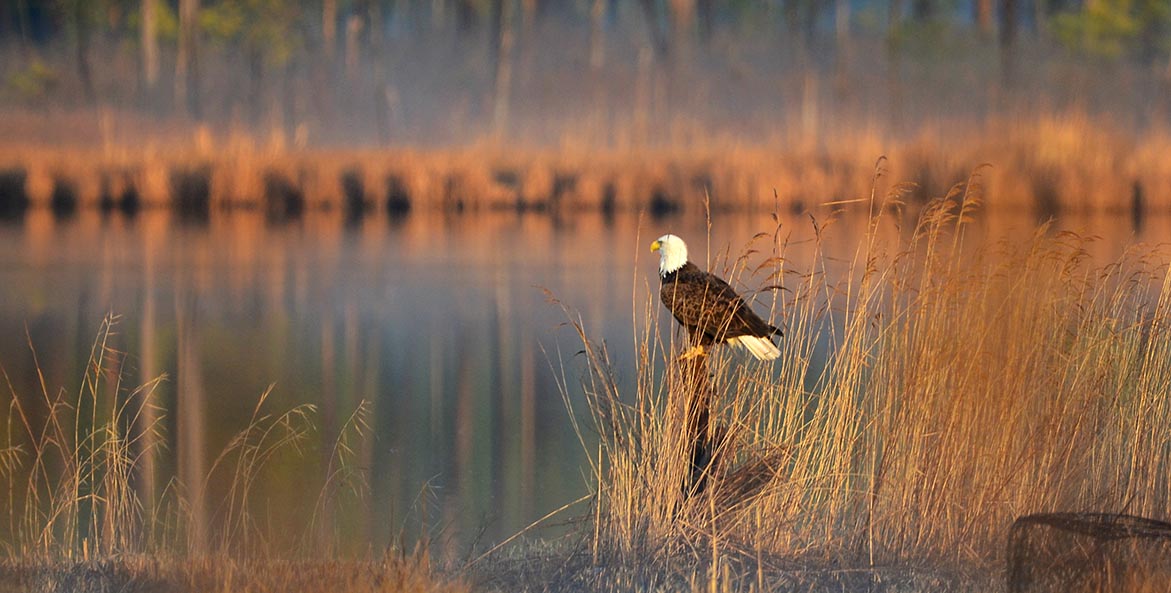The following opinion by Bernie Fowler and William C. Baker was first published in the The Washington Post.
Federal leadership is the missing ingredient needed for the nation's largest environmental restoration effort to succeed.
Americans should take note; the state and federal commitment to save the Chesapeake Bay is at risk of failure. The largest and once most productive estuary in North America is the victim of systematic clean air and clean water reversals over the past four years. Without swift and comprehensive action from the Biden administration and new Environmental Protection Agency Administrator Michael Regan, the Chesapeake will decline even further into national disgrace.
Failure to save the bay portends ill for the Great Lakes, San Francisco Bay, Galveston Bay and any other major waterway plagued by pollution.
Between the two of us, we have been on the front lines of saving the bay for more than 100 years. Restoring the 64,000-square-mile Chesapeake Bay watershed has always been a daunting challenge. But, until recently, it was primed for success. The bay's problems and their solutions have been the subject of rigorous scientific study for more than 50 years.
The Chesapeake enjoys broad bipartisan support. President Ronald Reagan declared the cleanup effort a national priority in 1984. In 2010, it secured the largest and most complex federal and state pollution-reduction plan in the country, agreed to by D.C. and the six states that share its watershed.
Despite all of this, restoration remains elusive. It's not that progress hasn't been made—the oxygen-depleted dead zone in the bay has been shrinking over time, for instance. But the bay is still an estuarine system dangerously out of balance. And not all states are pulling their weight. Pennsylvania and, to a lesser extent, New York are nowhere near meeting their pollution-reduction commitments. The current blueprint to save the bay is its best hope, but it needs renewed political courage to put clean water for all ahead of short-term profit for the few.
Consider just one example of all that remains wrong, the once-iconic Patuxent River, flowing through the center of the bay watershed. During the Great Depression, it sustained Southern Maryland families with its abundance of blue crabs, oysters and fish. The river's biological abundance, economic stimulus and magical beauty have been sacrificed to sprawling suburban development, high taxes and massive pollution loads. A contested proposal to allow development of thousands of new homes in rural Calvert County is an alarming omen for the river's future; if the pollution implications of more stormwater runoff and wastewater discharge continue to be sidelined, water quality will decline and may never recover.
The Patuxent's case demonstrates that the struggle for clean water is both intensely local and necessarily regional. Nature is agnostic to county and state boundaries. The Chesapeake Bay system, science instructs, must be managed as a single ecological system, even as it encompasses such a vast political geography. Only the federal government can serve this vital role.
Reagan and his EPA administrator who committed to cleaning up the bay, William Ruckelshaus, understood. President Donald Trump and his EPA administrators, Scott Pruitt and Andrew Wheeler, did not. In the past four years, they quietly dismantled the federal presence in the Chesapeake partnership. And, worse, they reversed dozens of national clean air and water regulations that were the very foundation of the states' environmental tools.
President Biden is a Chesapeake Bay-state native son. And now, from D.C., on the shores of the Potomac River, the Chesapeake's second largest after the Susquehanna, he still has time to put the federal-state partnership back on track. Biden and Regan can make saving the bay one of the greatest environmental success stories the world has ever seen and a source of great pride for all Americans. It's time to make history.
—Bernie Fowler, a Democrat, is a former Maryland state senator and Calvert County commissioner.
William C. Baker is president of the Chesapeake Bay Foundation.



